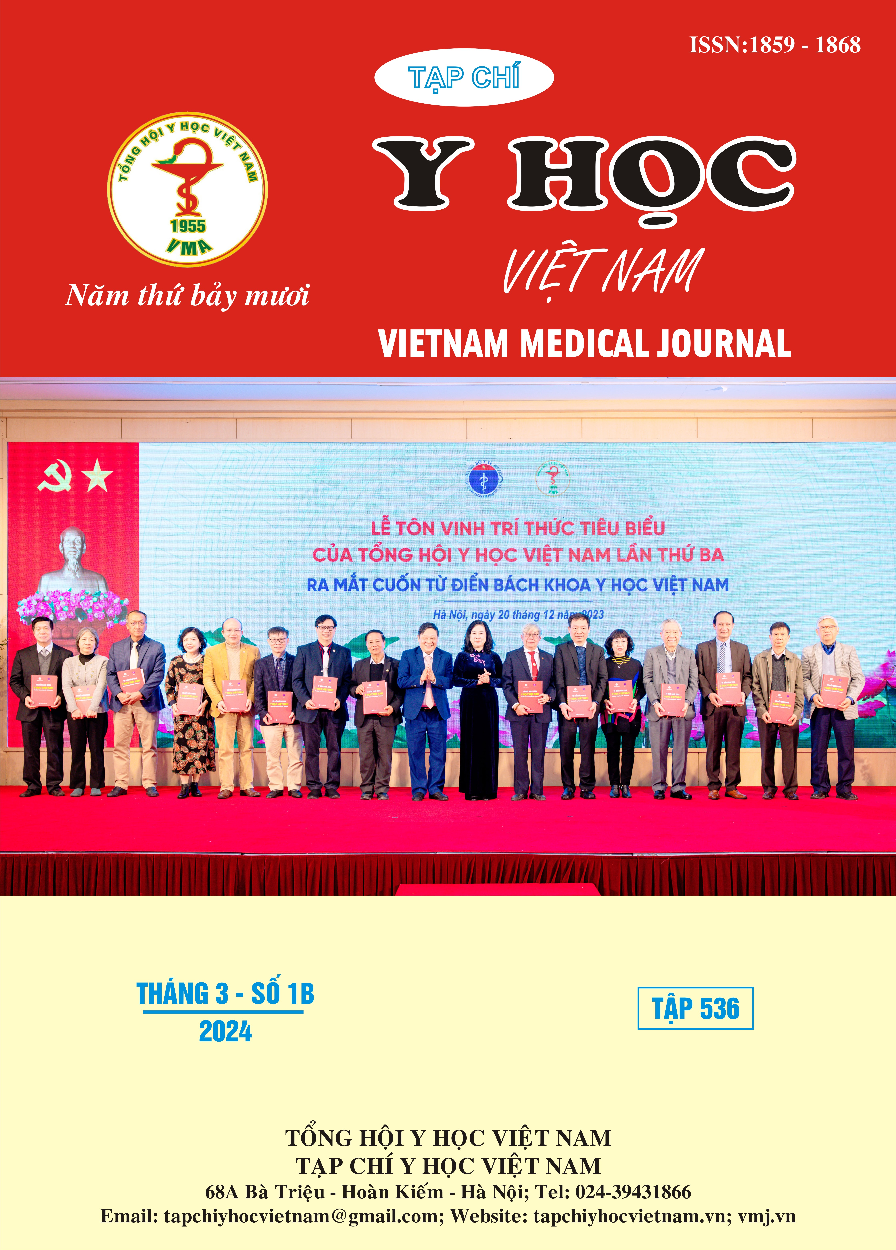EVALUATION OF MINI IMPLANTS AND MINI IMPLANT-RETAINED OVERDENTURES AFTER 5 YEARS
Main Article Content
Abstract
Background: Mini-implant (MI) for overdentures is an alternative treatment option to two conventional implants in elderly patients with systemic diseases and severe bone resorption. In Vietnam, in spite of many studies on MI, there are still few studies evaluating the success of MI-supported mandibular overdentures after long period of use. Objectives: Evaluate the effectiveness of MI to support a mandibular complete denture after 5 years on the following aspects: MI, denture condition, patient’s satisfaction, and complications (if any). Materials and methods: Case-study report on patients treated with mandibular overdenture on MI (in the study of Le Thi Phuong Lan, 2015). Patients were examined clinically, taken periapical radiographs of the area with MI and evaluated the MI (including stability, soft tissue condition, existence and severity of bone loss around the implant), the overdenture’s condition (retention, stability, occlusion), patient’s satisfaction with dentures (via the questionnaires) and complications. Results: The stability of 19 MIs was poor (10<PTVs > 20). More than 80% of MIs have PlI and GI at 2nd and 3rd degree. Vertical bone loss: 3.59 ± 1.25 mm, horizontal 1.2 ± 0.96 mm. The cumulative survival rate of MI was 78.95 %. The dentures have poor retention, low vertical dimensions, but complete stability. The patients are very satisfied with the denture. Nearly 50% of MIs have worn ball heads. Conclusion: The existence of MI after long time helps to support the mandibular overdenture. Poor denture maintenance and difficulty in maintaining hygiene around the MI are issues of concern in these patients.
Article Details
References
2. Albrektsson T, Zarb G, Worthington P, Eriksson AR. The long-term efficacy of currently used dental implants: a review and proposed criteria of success. The International journal of oral & maxillofacial implants. 1986;11-25.
3. Limpuangthip N, Somkotra T, Arksornnukit M. Modified retention and stability criteria for complete denture wearers: A risk assessment tool for impaired masticatory ability and oral health-related quality of life. The Journal of prosthetic dentistry. 2018; 43-49.
4. Ma S., Waddell N., Atieh M.A., Alsabeeha N.H.M., and Payne A.G. T. Maxillary three-implant overdentures opposing mandibular two-implant overdentures: 10-year prosthodontic outcomes. International Journal of Prosthodontics. 2016; 327–336.
5. Marcello-Machado R. M., Faot F., Schuster A. J., Machado Bielemann A., Júnior O. L. C., and Cury A. A. D. B. One-year clinical outcomes of locking taper Equator attachments retaining mandibular overdentures to narrow diameter implants. Clinical Implant Dentistry and Related Research. 2018; 483–492.
6. Naert I, Alsaadi G, van Steenberghe D, Quirynen M. A 10-year randomized clinical trial on the influence of splinted and unsplinted oral implants retaining mandibular overdentures: peri-implant outcome. The International journal of oral & maxillofacial implants. 2004; 695-702.
7. Shatkin TE, Petrotto CA. Mini dental implants: a retrospective analysis of 5640 implants placed over a 12-year period. Compend Contin Educ Dent. 2012; 2–9.
8. Storelli S, Caputo A, Palandrani G. Use of Narrow-Diameter Implants in Completely Edentulous Patients as a Prosthetic Option: A Systematic Review of the Literature. Biomed Res Int. 2021; 557-568.
9. Temizel S, Heinemann F, Dirk C, Bourauel C, Hasan I. Clinical and radiological investigations of mandibular overdentures supported by conventional or mini-dental implants: A 2-year prospective follow-up study. The Journal of prosthetic dentistry. 2017; 239-246.


